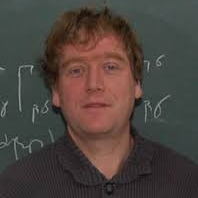Topic Menu
► Topic MenuTopic Editors



Applications of Photonics, Laser, Plasma and Radiation Physics
Topic Information
Dear Colleagues,
This Topic provides a generous platform dedicated to publishing investigations into physics theory and applied physics, including research articles, scientific communications, and reviews. This invitation refers to exciting fields of new research at the border between soft and hard matter, plasmas and lasers, and the optical behavior of complicated structures and applied biological sciences, in the ultimate instance.
In photonics, which is the physical science of light waves, ideal research applications related to the generation, detection, and manipulation of light will be considered.
In the same way, in the field of radiation science, we welcome, among other things, topics in the area of electromagnetic radiation, ionizing radiation, neutron radiation, or black-body radiation.
Regarding related subjects in plasma physics, these can be, according to the recommendations, astrophysical plasmas, laser-produced plasmas, magnetically confined plasmas, and plasma-based accelerators. We want to have a wide range of topics addressed by authors interested in the complex fields listed here but better covered, so we recommend a more nuanced involvement of the chosen topic, respectively physics in general, or photonics, the universe itself, and entropy in a private sense. In addition, the Topic is open to receiving articles in the field of lasers such as laser holography, laser emitting, and power lasers, and their applications in industry and medicine.
In the treatment of the suggested topics, it is recommended to use the known methods, starting with the macroscopic treatment and ending with the microscopic quantum theory, but also applying arguments from statistical physics, nonlinear dynamics, entropy theory, fractal analysis, and the fractional calculus. Finally, we will accept scientifically rigorous and novel original papers regarding the processes discussed above, as well as reviews and meta-analyses in the field.
Potential topics include, but are not limited to, the following research areas:
- Photonics Physics;
- Plasma Physics;
- Radiations Science;
- Lasers and applications;
- Physics Complex Systems;
- Fractal Analysis;
- Fractional Calculus.
Prof. Dr. Viorel-Puiu Paun
Prof. Dr. Eugen Radu
Prof. Dr. Maricel Agop
Prof. Dr. Mircea Olteanu
Topic Editors
Keywords
- photonics physics
- plasma physics
- radiations science
- lasers and applications
- physics complex systems
- fractal analysis
- fractional calculus
Participating Journals
| Journal Name | Impact Factor | CiteScore | Launched Year | First Decision (median) | APC |
|---|---|---|---|---|---|

Entropy
|
2.7 | 4.7 | 1999 | 20.8 Days | CHF 2600 |

Photonics
|
2.4 | 2.3 | 2014 | 15.5 Days | CHF 2400 |

Physics
|
1.6 | 2.4 | 2019 | 27.7 Days | CHF 1400 |

Plasma
|
- | - | 2018 | 32.4 Days | CHF 1400 |

Universe
|
2.9 | 3.6 | 2015 | 20.6 Days | CHF 2400 |

Fractal and Fractional
|
5.4 | 3.6 | 2017 | 18.9 Days | CHF 2700 |

Condensed Matter
|
1.7 | 3.7 | 2016 | 20.3 Days | CHF 1600 |

MDPI Topics is cooperating with Preprints.org and has built a direct connection between MDPI journals and Preprints.org. Authors are encouraged to enjoy the benefits by posting a preprint at Preprints.org prior to publication:
- Immediately share your ideas ahead of publication and establish your research priority;
- Protect your idea from being stolen with this time-stamped preprint article;
- Enhance the exposure and impact of your research;
- Receive feedback from your peers in advance;
- Have it indexed in Web of Science (Preprint Citation Index), Google Scholar, Crossref, SHARE, PrePubMed, Scilit and Europe PMC.


